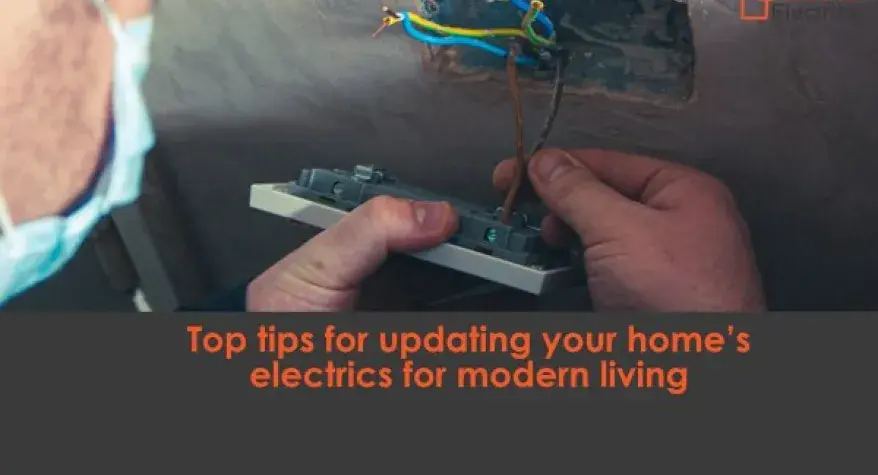Top tips for updating your home’s electrics for modern living
British homes are the oldest in Europe, with only 7% built after 2000. According to the Centre for Ageing Better nearly 40% of homes were built before 1946. This means that only a fraction of homes in the UK were built with an electrical system that is fit for modern living. Thinking about updating your home's electrics is essential for any homeowner today.
In some older houses, it can be the case that they might only have 1 or 2 plug sockets in a room. This may have suited the way of living when installed, but now it is hard to live the lifestyle most of us live without resorting to using extension cables.
A lot of the homes I visit are awash with extension cables, overflowing with spaghetti like masses of laptop, mobile phone and camera chargers. While there is no harm in using extension cables, make sure you do so in a way that does not encourage a fire. Spend a few pounds more and buy a known brand from a reputable store.
If you find you are using extension leads on a regular basis or if you use a lot of them, it would be a good idea to consider having additional sockets installed. Here are our top tips for when you decide to upgrade your home’s electrical circuit to keep up with the demands of modern living.
1. Install USB sockets.
In certain locations it could be wise to have USB sockets installed to live up to the demand of ever-increasing devices that are required to be powered via a USB lead. They are not expensive and would give you twice as many power points for the same physical space.
2. Choose your locations wisely
Think about how you use your home. When our homes are built, often the electrics are added to a room without thought to the people living in the house. When you have additional sockets installed you can have a family-centric approach and plan the sockets around your needs.
Try and map out where you instinctively use and charge your electronic devices so that you can reduce the need for extension cables. Do you have a central location for all your phone chargers? Do you leave your phone next to your bed at night? Do you tend to work with your laptop on the dining table?
My wife tends to charge her mobile phone on a nightstand, so I installed a USB socket. It means she can charge her mobile phone and Kindle, power a lamp and a hairdryer, all from the same socket without the need of an extension cable.
3. Check you are protected
With the addition of more sockets, you need to check that your home’s electrical circuit can handle the load and is safe to use. Have your electrician check that you have RCDs in your fuse board and that your circuit breakers/fuses are capable of handling the extra load from your additional sockets. RCD stands for Residual Current Devices. RCDs work to protect you from electrical shocks. It is now compulsory for new plug sockets in a home to be protected by an RCD. For more information on RCDs and how to know whether your fuse board needs an upgrade, check out our blog post.
4. Consider a partial or full rewire
If your home's electrical wiring has not been upgraded or maintained for quite some time and you find that lots of work is needed to bring your home up to standard, then it would be wise to see if a full or part rewire is needed. It may be more cost-effective in the long run.
5. Think about smart devices that require power
If you do decide to partially or fully rewire your home to make it more useful for modern living, think about some of the useful smart devices that are available on the market right now. Devices such as video doorbells, home security cameras and garage openers do come with the option of rechargeable batteries. But wiring these devices into your mains is much more convenient and ensures that the batteries do not run out at inopportune moments.
Updating your home's electrics
If you would like further information about upgrading your home for modern living, please contact us for a free consultation.




